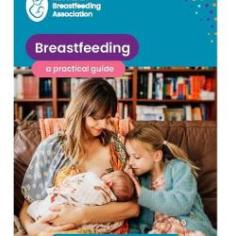Babies have instincts that help them to breastfeed
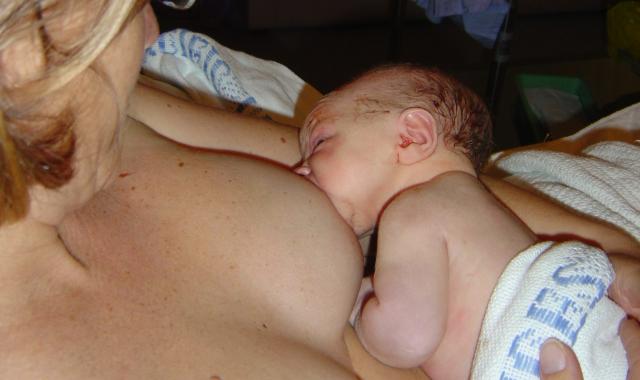
'Baby-led attachment' is the term used to describe the process of a baby seeking out their mother's breast.
Baby-led attachment offers your baby the most natural introduction to breastfeeding. It is particularly helpful for babies who take a while to get the idea of how to breastfeed.
Get to know your baby's feeding cues
Crying is a late feeding cue so it can help to recognise earlier signs. If your baby is upset, you can calm them by:
stroking your baby’s back in one direction
talking to your baby
gentle rocking movements
letting baby suck on your clean finger.
A calm baby is more likely to be able to follow through on their instincts than a baby who is upset. Their tongue will be down and forward, where it needs to be to help achieve good attachment to the breast.
Hold your baby skin-to-skin
You may find it helpful to be completely skin-to-skin with your baby, ie baby in just a nappy and you without a bra. Your body helps to regulate your baby's temperature by changing your own breast temperature. Skin-to-skin contact also helps to regulate your baby's blood sugar levels and breathing and stabilise their heart rate.
However, it's not essential to be skin-to-skin at feeding time if you feel more comfortable with both of you lightly dressed, as long as your baby can easily reach your breast.
Try a laid-back position
Hold your baby to your body in the way that feels right for you. Many mums choose to hold their baby upright on their chest and between their breasts. Laid-back breastfeeding works well because it's easier for baby to make their own way to your breast, as you gently support them.
Having baby on your chest can also help to reduce nipple trauma, as it lessens the drag on your nipple that may happen when you are sitting upright holding them.
When your baby is ready to feed...
They will start to lift and bob their head around. Some babies will bob their way down to a breast, others will gently glide towards a breast while others will quite dramatically throw themselves towards a breast.
All these movements have a definite purpose — to find your breast!
Your baby will move closer to your breast
Baby may nuzzle towards your nipple. They may bring their hand(s) to their mouth and begin to feel around with their fists and move their head from side to side. Don’t worry if they suck their fist. They will soon figure out that it’s not the breast.
Some babies will suck their fist to calm themselves. It’s all part of the process. You may be eager to encourage your baby to feed but there's no need to hurry them. It is amazing to watch your baby and their instincts work this out. Try to be patient and let it happen in their own time!
Baby will look for your breast
Baby will bring their tongue forward and may lick at your breast. They may press into your breast with their fists or dig their feet into your legs or lap. Their movements help get the hormone oxytocin released in your brain, and in turn that helps get breastmilk flowing.
Don’t worry that it takes time in the early days. Your baby and your breasts will get more efficient with practice.
When your baby finds the right spot...
They will dig their chin into your breast, reach up with an open mouth, attach to your breast and begin sucking. Let your baby lead the way as much as possible.
You can get comfortable
If you are sitting up, you may find it helpful to pull your baby's bottom closer in around your body or to provide some firm support to your baby's neck or shoulders. As you're doing this, try to avoid pushing on baby’s head. A baby needs to be able to move their head to latch on effectively.
If you're in a reclining position, gravity will hold your baby on your body - you’re just there to steady them.
It can take a bit of practice
If your baby has had many chances to seek out your breast using their instincts, especially in the early weeks, they usually quickly become skilful at breastfeeding, no matter what position you choose.
Using baby-led attachment for the first feeds will increase your baby's chances of successfully attaching and feeding. However, a newborn baby retains the reflex to self-attach to the breast for about six weeks after birth. So if at a later stage, you are having attachment difficulties, you can go 'back to basics' and give your baby the opportunity to use their innate behaviours to find the breast.
Watch a baby attach to his mother's breast in this video from our Breastfeeding Basics series.
© Australian Breastfeeding Association April 2022
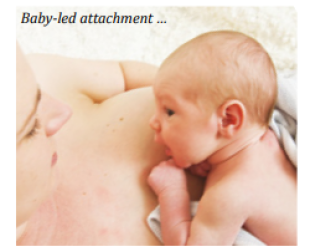
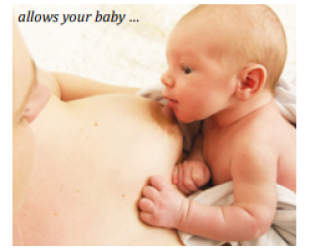
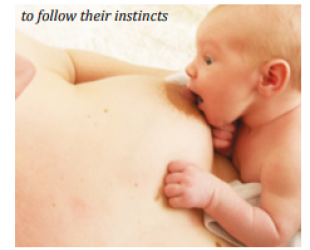
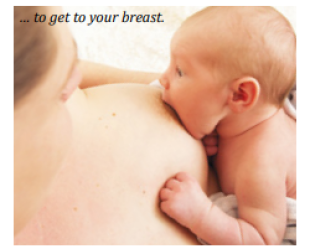
Find out more about getting breastfeeding started
Online interactive session free for members
Newborn Virtual Village - Comfortable attachment

